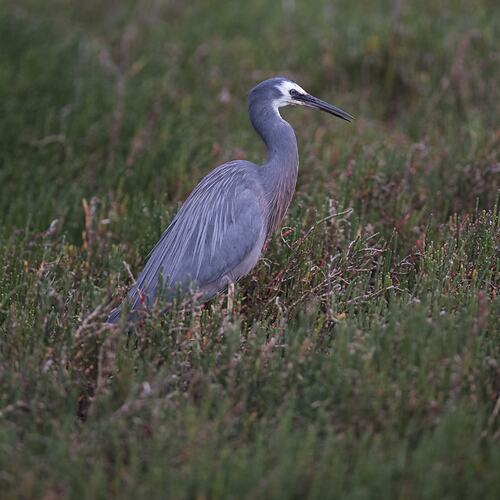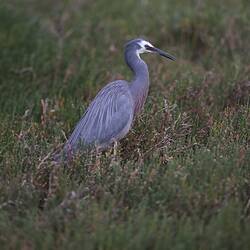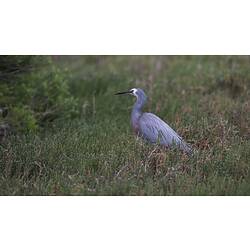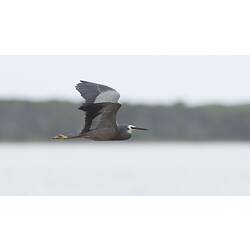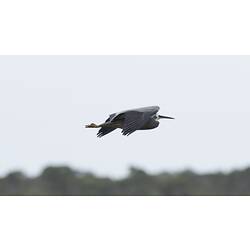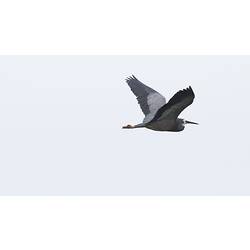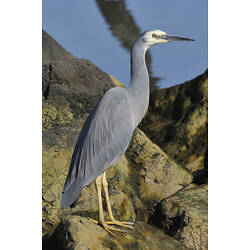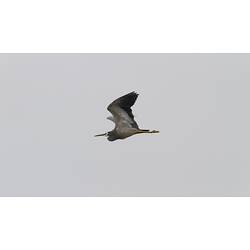General Description
Body blue-grey, face white, breast feathers brown-purple. Neck long and slim, bill pointed and grey. Legs slender and yellow. During breeding season long feathers (nuptial plumes) develop on back, neck and head. Bill to tail length is up to 70 cm. Flight is slow and bouncing.
Biology
The most commonly seen heron in Australia. White-faced Herons feed in shallow water on intertidal mud flats and reefs, and also in pastures. They eat crustaceans, fish, frogs, insects and worms. Prey is caught by standing still in the water searching for movement, or by wading through water and disturbing animals. Herons can breed outside of their normal breeding season in response to rainfall, but usually produce only one brood per year. The nest is a messy shallow structure made from sticks built within a tree. Both sexes construct the nest, incubate the eggs and care for the chicks. Typical clutch size is three to five eggs.
Distribution
New Zealand, New Caledonia, Indonesia and New Guinea. Mainland Australia, Tasmania and coastal islands.
Habitat
Anywhere with water including mudflats, wetlands, grasslands, pastures, saltmarshes, urban areas, and coastal bays and inlets.
More Information
-
Animal Type
-
Animal SubType
-
Brief Id
A heron with a blue-grey body, white face and yellow legs.
-
Colours
Grey, White
-
Maximum Size
70 cm
-
Habitats
-
Diet
Carnivore
-
Diet Categories
Crustaceans, Fish, Insects, Worms
-
Endemicity
-
Commercial
No
-
Conservation Statuses
CITES: Not listed, FFG Threatened List: Not listed, EPBC Act 1999: Not listed, IUCN Red List: Least Concern
-
Taxon Name
-
Common Name
White-faced Heron
-
Kingdom
-
Phylum
-
Subphylum
-
Class
-
Order
-
Family
-
Genus
-
Species Name
novaehollandiae
